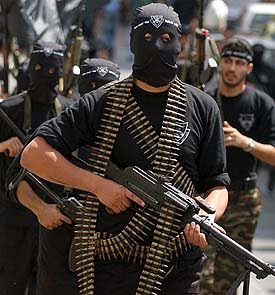Ever since 2001, the United States and the International community have focused on eradicating Terrorism. In addition to the sale of drugs and arms, human trafficking is a major source of income for groups such as Al-Qaeda, and one of the most effective ways for us to stop organizations such as Al Qaeda from killing innocent people is to cut off their funding. After all, the weapons and bombs used by these organizations cost a lot of money, and these organizations need a steady income to fund their activities. By curbing human trafficking, we can help stop terror organizations from operating.
Al Qaeda, responsible for the 9/11 attacks, is known to be involved in human trafficking in South Asia and Europe. Recently, an Al-Qaeda member confessed to running a smuggling ring in which individuals from Bangladesh, Pakistan, and India were trafficked into Spain. Trafficking offers a cheap, highly profitable method to fund activities. The risk is small, as penalties for human trafficking are much lighter than those for drug and arms trafficking.
Human trafficking is not only an ethical and moral issue. In recent years, it has become a topic of national security. Not only Al-Qaeda has been involved in human trafficking, but also gangs within the United States are known to be funded by trafficking and prostitution. Gang violence has haunted the streets of America for many decades.
By stopping human trafficking, we are not only fighting for human rights, but we can also put a stop to violence that has taken the lives of many innocent lives.





